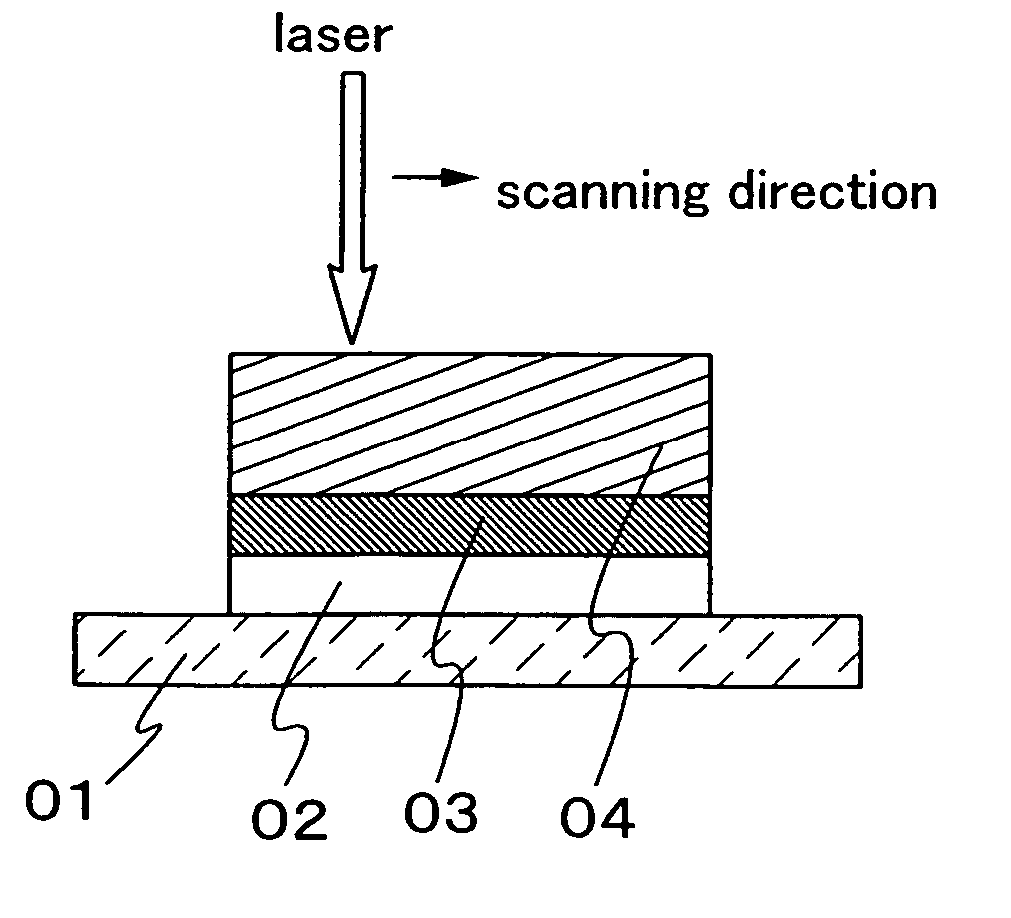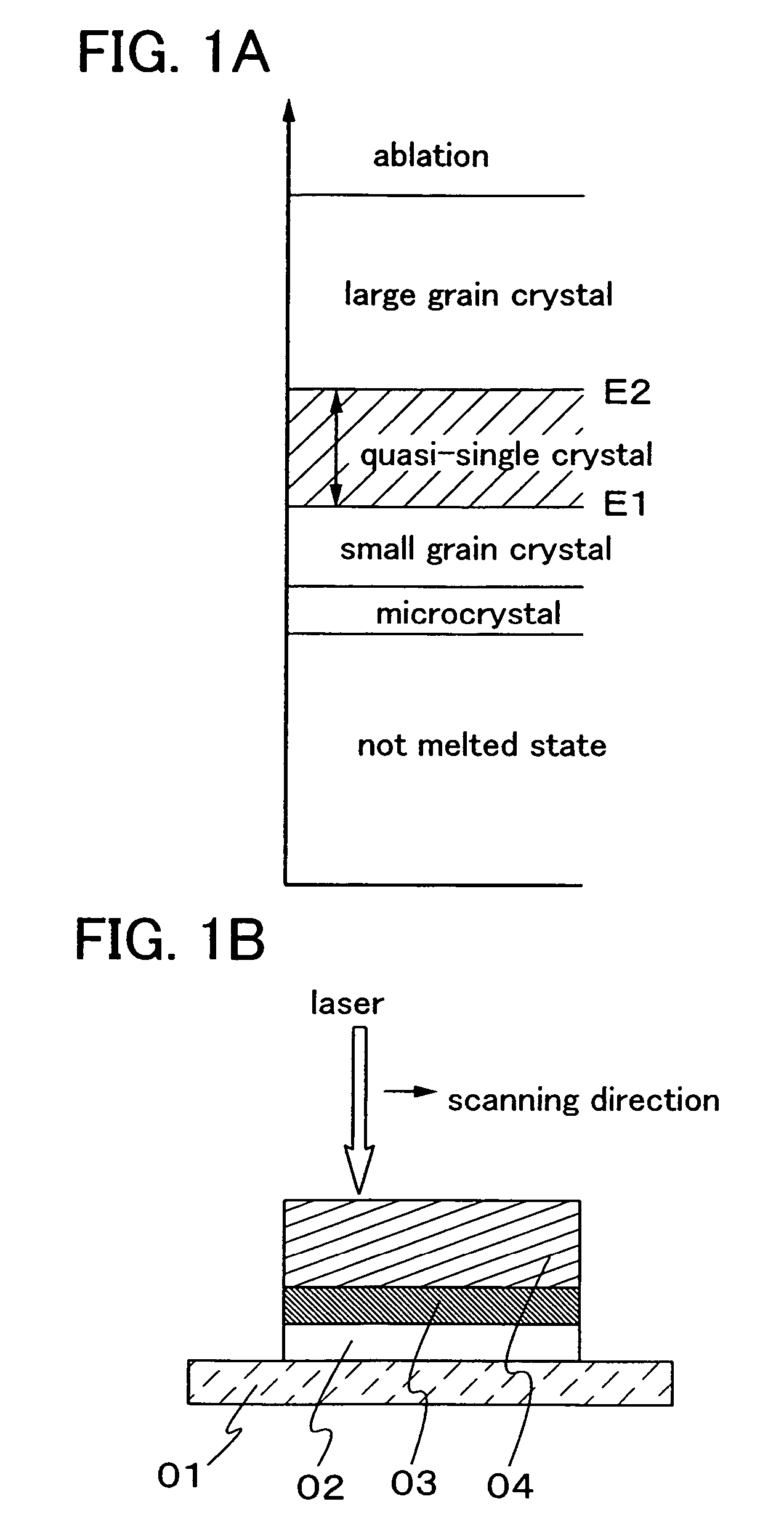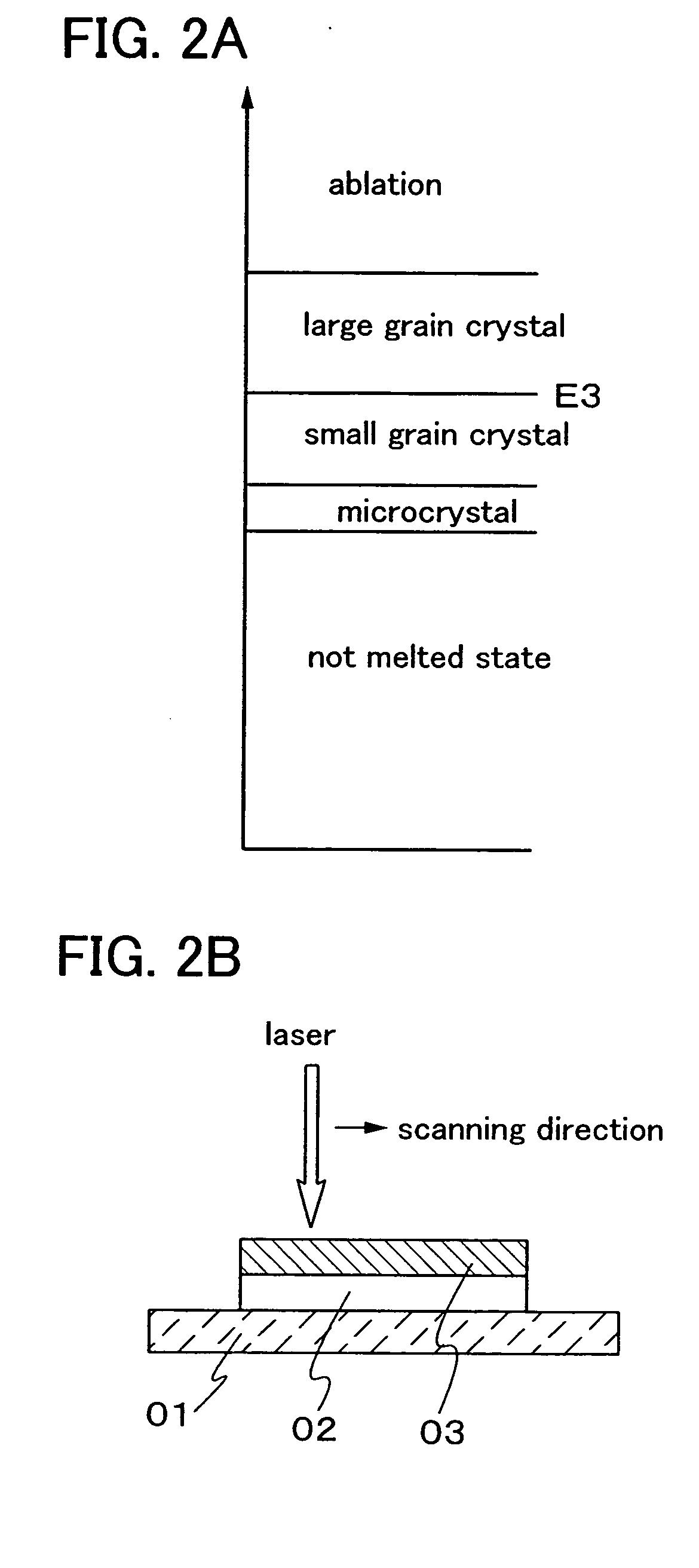Semiconductor device and manufacturing method thereof
a technology of semiconductors and manufacturing methods, applied in the direction of semiconductor devices, basic electric elements, electrical equipment, etc., can solve the problems of deteriorating an electrical characteristic of a tft, and achieve the effects of high current driving capacity, small variation of characteristics, and high speed operation
- Summary
- Abstract
- Description
- Claims
- Application Information
AI Technical Summary
Benefits of technology
Problems solved by technology
Method used
Image
Examples
embodiment 1
[0118] This embodiment will explain a measurement result of the plane orientation of a quasi-single crystalline silicon film of the present invention, which is used as a sample, by an EBSP method. In addition, the plane orientations of a single crystalline silicon film and a silicon film where a large grain crystal is formed were measured by an EBSP method in the same manner, and they were compared.
[0119] When an electron beam is made to enter a sample having a crystal structure, inelastic scatterings also occur at the back, and a linear pattern, which is peculiar to crystal orientation by Bragg diffraction, can also be observed in the sample. Here, this linear pattern has generally been referred to as a Kikuchi line. An EBSP method obtains crystal orientation of a sample by analyzing a Kikuchi line reflected in a detector.
[0120] A sample having a polycrystalline structure has crystal orientations where each crystal grain is different. Thus, every time the irradiation position of ...
embodiment 2
[0175] This embodiment will explain a result of measuring characteristics of a semiconductor film of the present invention.
[0176]FIGS. 7A and 7B each show an optical microscope photograph of a quasi-single crystalline silicon film that is manufactured using the present invention. A sample was manufactured through the following procedure. A silicon oxide film containing nitrogen having a thickness of 150 nm was formed as a base insulating film over a glass substrate having a thickness of 0.7 mm, an amorphous silicon film was formed to have a thickness of 66 nm, and further a silicon oxide film containing nitrogen having a thickness of 500 nm was formed as a cap film. Next, two laser oscillators were prepared and each laser beam was emitted with an energy of 7.5 W. After synthesizing the energy of this two laser beams by using an optical system, the amorphous silicon film was irradiated with the laser beam through the cap film. The laser beam energy after synthesizing the laser beams...
embodiment 3
[0183] A semiconductor film of the present invention was evaluated by Raman spectroscopy. Raman spectroscopy is one of effective methods to evaluate crystallinity of a substance, and is used in order to quantify the crystallinity of a semiconductor film which is formed by laser irradiation. Generally, a piece of information on crystallinity, a crystal grain size, or stress is obtained from a peak position or a full width at half maximum of a Raman line, and a piece of information on a plane orientation is obtained from intensity or the number of a Raman line. In addition, when the plane orientation of the manufactured film or crystal grains is unclear, a plane orientation or a crystal axis direction can be specified by carrying out polarization Raman measurement from a different orientation.
[0184] First, as shown in FIG. 11A, a glass substrate having a thickness of 0.7 mm is prepared as a substrate 300. A silicon oxide film containing nitrogen having a thickness of 150 nm was forme...
PUM
 Login to View More
Login to View More Abstract
Description
Claims
Application Information
 Login to View More
Login to View More - R&D
- Intellectual Property
- Life Sciences
- Materials
- Tech Scout
- Unparalleled Data Quality
- Higher Quality Content
- 60% Fewer Hallucinations
Browse by: Latest US Patents, China's latest patents, Technical Efficacy Thesaurus, Application Domain, Technology Topic, Popular Technical Reports.
© 2025 PatSnap. All rights reserved.Legal|Privacy policy|Modern Slavery Act Transparency Statement|Sitemap|About US| Contact US: help@patsnap.com



